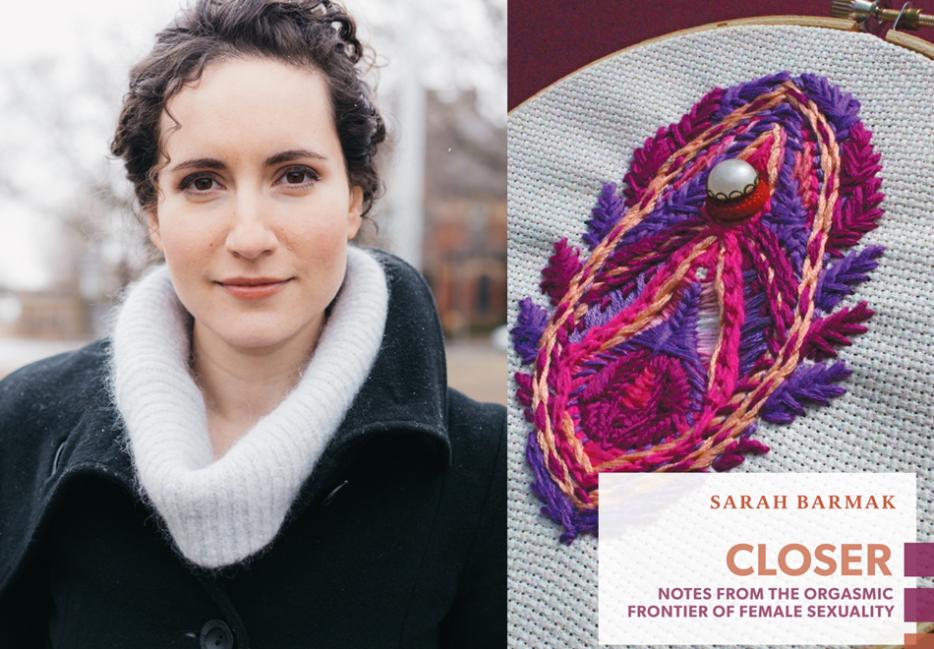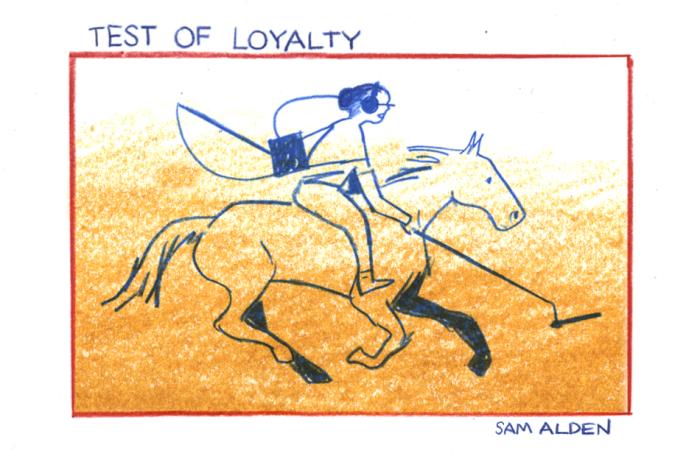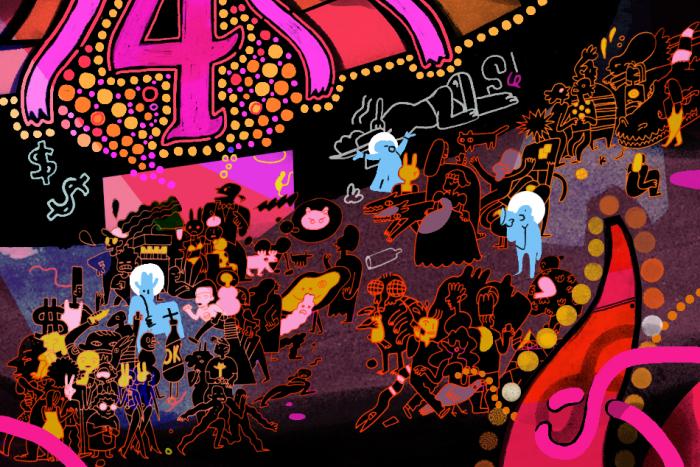Get a couple of drinks into her and my best friend from high school will likely share the story of how, on a music department field trip our junior year, a big group of us locked ourselves into my friend Angie’s hotel room and totally undressed. No, this wasn’t some Girls Gone Wild exercise, and though I think we did practice kissing each other on that trip—or tried to, in between giggles—the episode was more about feeling ourselves than anything scandalous. I say “scandalous” because in so many societies and most certainly the Midwestern Catholic one in which I was raised, any curiosity in or expression of budding female sexuality is an implicit scandal: an act of impropriety, a small-to-medium-sized outrage at minimum. And so, when our lot of unclothed 16- and 17-year-old choir geeks horsed around around in that Minneapolis hotel room with our reasonably new breasts bared for probably the first time ever, we felt as though we were doing something a little bit forbidden. That is to say, we felt as though we were owning our own bodies and all their associated parts and just putting them out there, because they were ours and we could. This, we all had learned, is wrong.
There was another thing going on, too. We were, I’m pretty sure, scoping each other out. There’s a great fear among the recently pubescent that their bodies are somehow deviant from an optimal norm. We are our bodies’ interrogators, probing the acceptability of our breasts’ diameters or labias’ lengths. In an effort to better understand and interpret our own bodies, we compare them to those of others. We internalize the belief that we are messy, or unknowably complex.
“Early on, when I was first doing my research, I was doing it with the idea that women were mysterious and that female sexuality was difficult to understand,” journalist Sarah Barmak (and, disclosure, a good friend) tells me one early summer day over Skype. Her new book, Closer: Notes from the Orgasmic Frontier of Female Sexuality, traces the ways in which women’s sexuality encompasses a multitude of attributes and events that—to paraphrase from Sarah’s book—straddle nature and culture at once. “By the end of it I’ve come to realize that this itself is another myth, that it’s something we tell ourselves and are told by the culture at large,” Barmak told me. “We’re taught that male sexuality is the gold standard and that female sexuality is somehow broken or too complicated in comparison. And that is really insidious, and it’s really difficult to notice unless someone points it out.”
It’s no wonder that so much of the literature intended to inform our sexuality reads like either transcendental mysticism or motorcycle repair.
Kelli Korducki: Tell me how you got started on this subject, Sarah.
Sarah Barmak: I guess I had a sense that there were a lot of subcultural rumblings around women exploring themselves and their sexuality on their own terms and in these weird ways, like orgasmic meditation.
When I went to Burning Man in 2013 I’d already had the idea to research this book, and so I was just going to everything that had anything to do with sexuality or womanhood or the divine feminine, which you to tend to find there. So I went to this orgasmic meditation demonstration, and it was like a church. It was a church atmosphere where people were worshipping this, like, crazy female energy eruption that was producing this sense of euphoria in like 200 people. And I was like, what the fuck?
The other thing that happened early on was almost the opposite of that in terms of mood, when I went to a couple of workshops at Good for Her [a women-focused sex shop in Toronto]. They were both about orgasms, which I was interested in at that time as this mysterious thing that can be difficult for women to achieve and that also doesn’t have a distinct biological function the way male ejaculation does. So anyway, one of these was for [cis] women who had never had an orgasm and it was sort of the diametric opposite of that Burning Man experience. It was women suffering. And I was amazed—it seemed as though they were suffering on two levels. On one level they felt that they were not whole, and on the other that there was a sense of shame in talking about it. They felt as though it was frivolous.
In your book you describe talking about your research with an ultra-progressive middle-aged woman whose reaction was more or less the same, that writing a book on women’s sexuality was paying lip service to a first-world problem.
When she said that, she totally echoed something that I had sensed from women who had dealt with this problem [of never having experienced orgasm], like “This isn’t a real problem.” It’s this insane double-standard. We invest so much in Viagra, and advertise it, and we would never even question that if a man can’t get an erection that’s a really big problem. Whereas, if women have this issue, they feel ashamed to even raise it because we have this Victorian hang up that women are not as naturally sexual as men are. But things are starting to change, and it’s just a question of how we are conceptualizing female sexuality now that we’re starting to think of it as more important.
Another thing that kind of relatedly struck me is how we, as a culture, have done such a good job of complying in our own ignorance. Until reading your book, I had no idea that there was a clitoral apparatus beyond the clitoral head itself—and that many doctors seem not to, as well. It’s remarkable how little we know about anatomy.
That shocked me too! Like, it’s not a theory. Scientists have been writing about it in journals for awhile. The clitoris is ignored so much in medical literature that there’s the potential that surgeons could mistakenly do damage to it during surgery, because they know so little about where this tissue is and what it does.
It’s difficult to imagine any sort of anatomical equivalent being so profoundly ignored.
It seems to come down to the fact that it’s a part of [cis] female sexual anatomy that doesn’t have anything directly to do with reproduction or urination, and because of that it doesn’t fit with our historical idea of what womanhood is. There’s no greater example of how a certain world view can even affect science and the way scientists study the body, and whether they even see this anatomy at all.
I wonder how a more complete view of anatomy would affect our worldview of what womanhood is.
I would be speculating, but there are specialists who have started studying this area and they talk about the CUV–the whole complex of clitoral tissue—as being active, in playing a very active role in arousal and intercourse. We have this historical view of the female body being passive during sex, as being like a passive recipient of the penis basically. But it’s possible as we study this more and more that it might change our idea of womanhood. I can’t even really imagine which direction that would go.
Do you have a hunch?
The only thing I would mention is that I think a lot of the most interesting interventions, in terms of challenging what female sexuality looks like or what our picture of what female sexuality looks like, will come from the women with the least power. Trans women, women of colour. We haven’t really given women who have less power a voice in expressing their sexuality, and there’s some white cis privilege at play when it comes to expressing our sexuality. So there’s more to come from those directions, from marginalized groups, and there’s a lot to learn.
That’s an interesting thought, that marginalized women are going to be the driving force of the next "frontier" of women's sexuality. The more I think about it, the more I realize just how deeply embedded the sexualized Other is in our conception of even the sexualized woman's body as Object. I guess I'm wondering what you think that disentanglement would look like?
The way that some WOC approach sexual liberation is a complex question because of the dynamic you describe. Because of the way white culture has historically sexualized and exoticized non-white women (often in order to paint an idealized picture of white femininity in contrast to it), WOC have not always embraced white feminism's sex-positivity as a tool of liberation. Sexuality for many marginalized women is not an arena of freedom but of oppression.
Yet despite that, some black women and WOC are embracing it, but in specific ways that address the exoticization of their bodies. Like the South American dancer / video artist Fannie Sosa, who I mention in the book—for her, twerking is a way of getting in touch with precolonial roots.
And I think we're seeing a really interesting tension now with black artists like Beyoncé using the body as a tool of liberation and ironically making a lot of white people uncomfortable!
When I see older white women worrying about the effect of Beyoncé on their daughters... I think there's a subtle layer of racism there they're completely unaware of, something that white culture has done by exoticizing black bodies for centuries.
This is something I really still have a lot to learn about. I'm by no means an expert, and I'd actually really like to read more black writers about their takes on this. There are so many incredible black women out there on Twitter right now, writing for so many media, I just wanna sit down and shut up and read them really.






